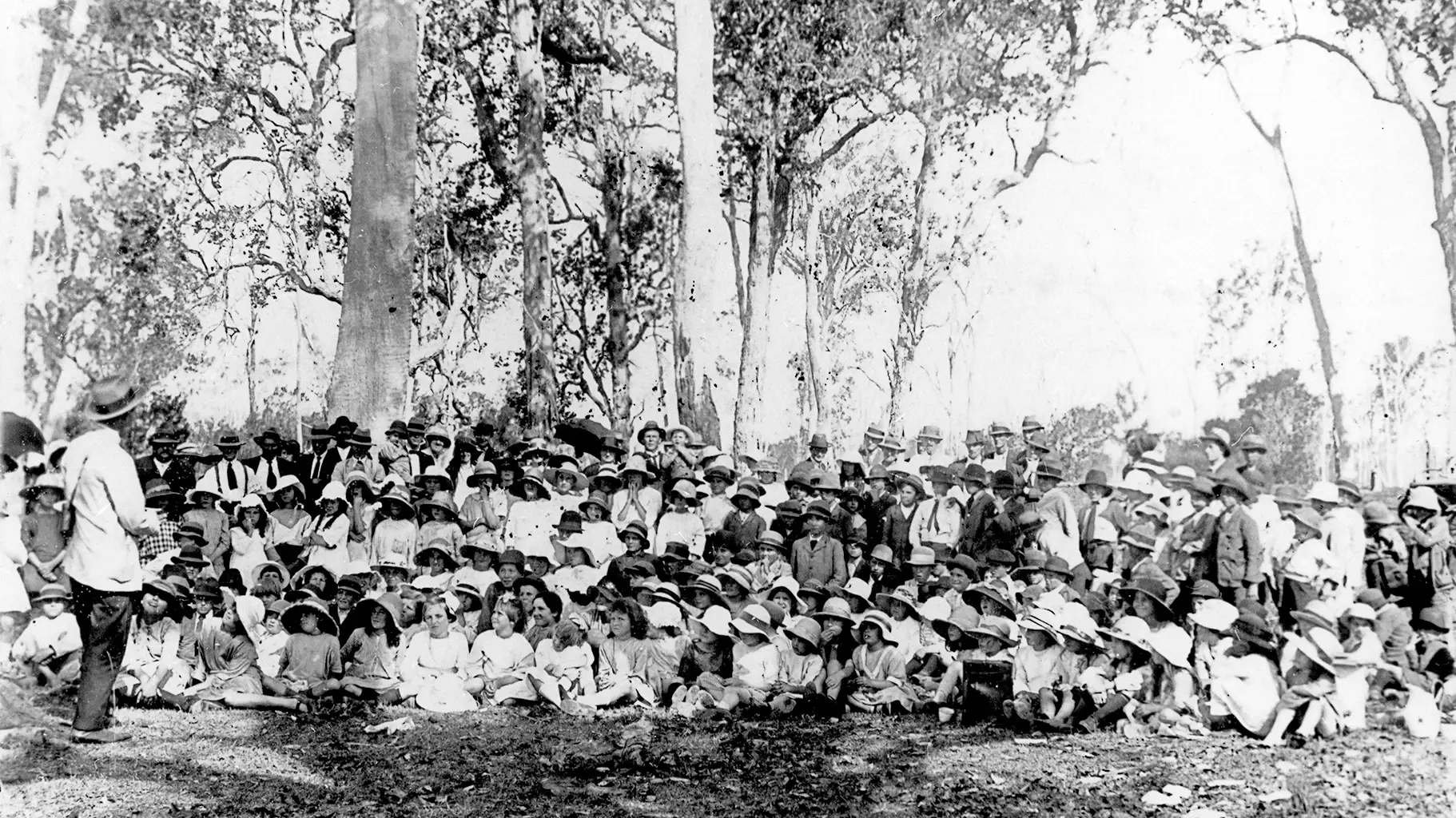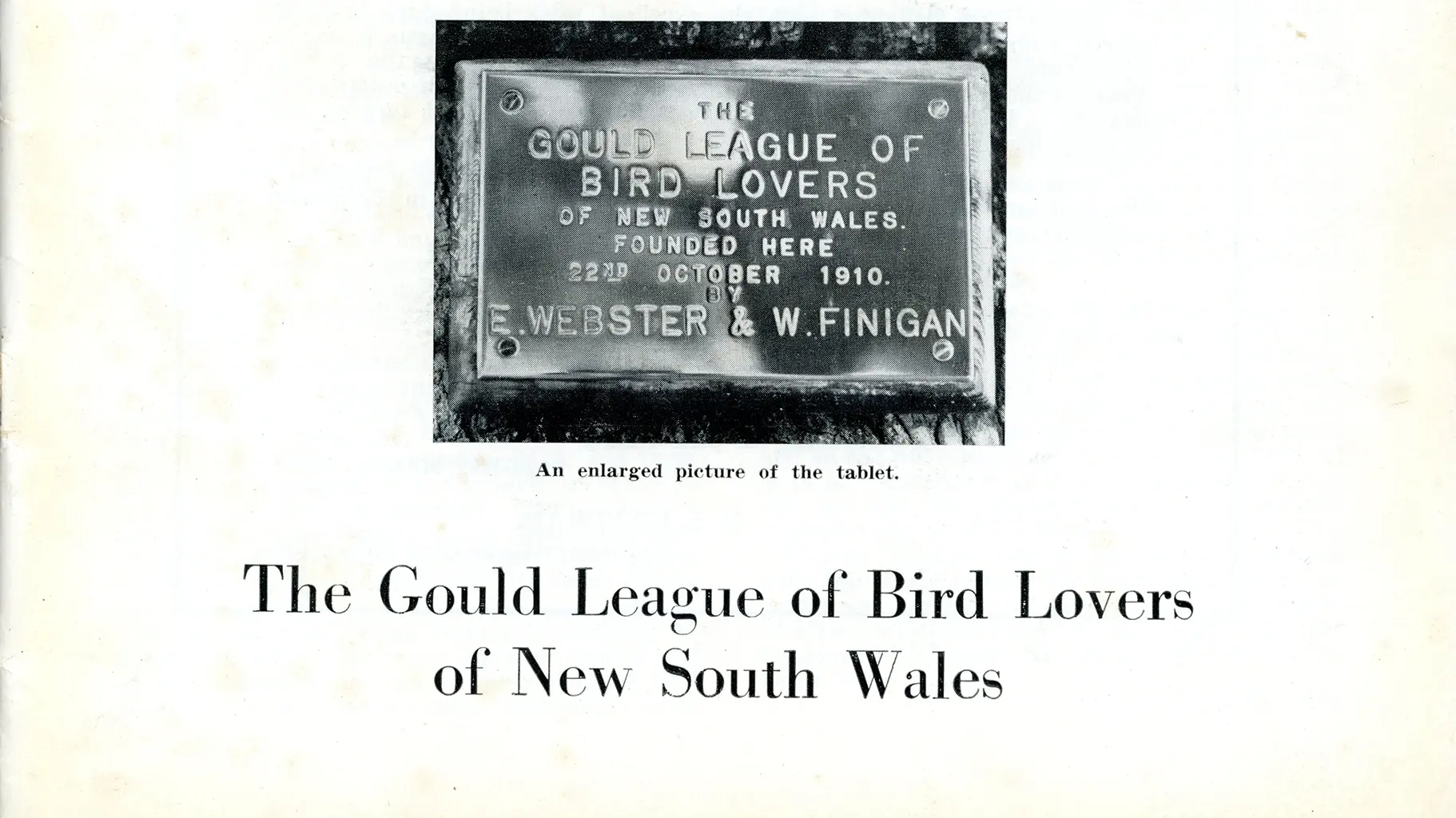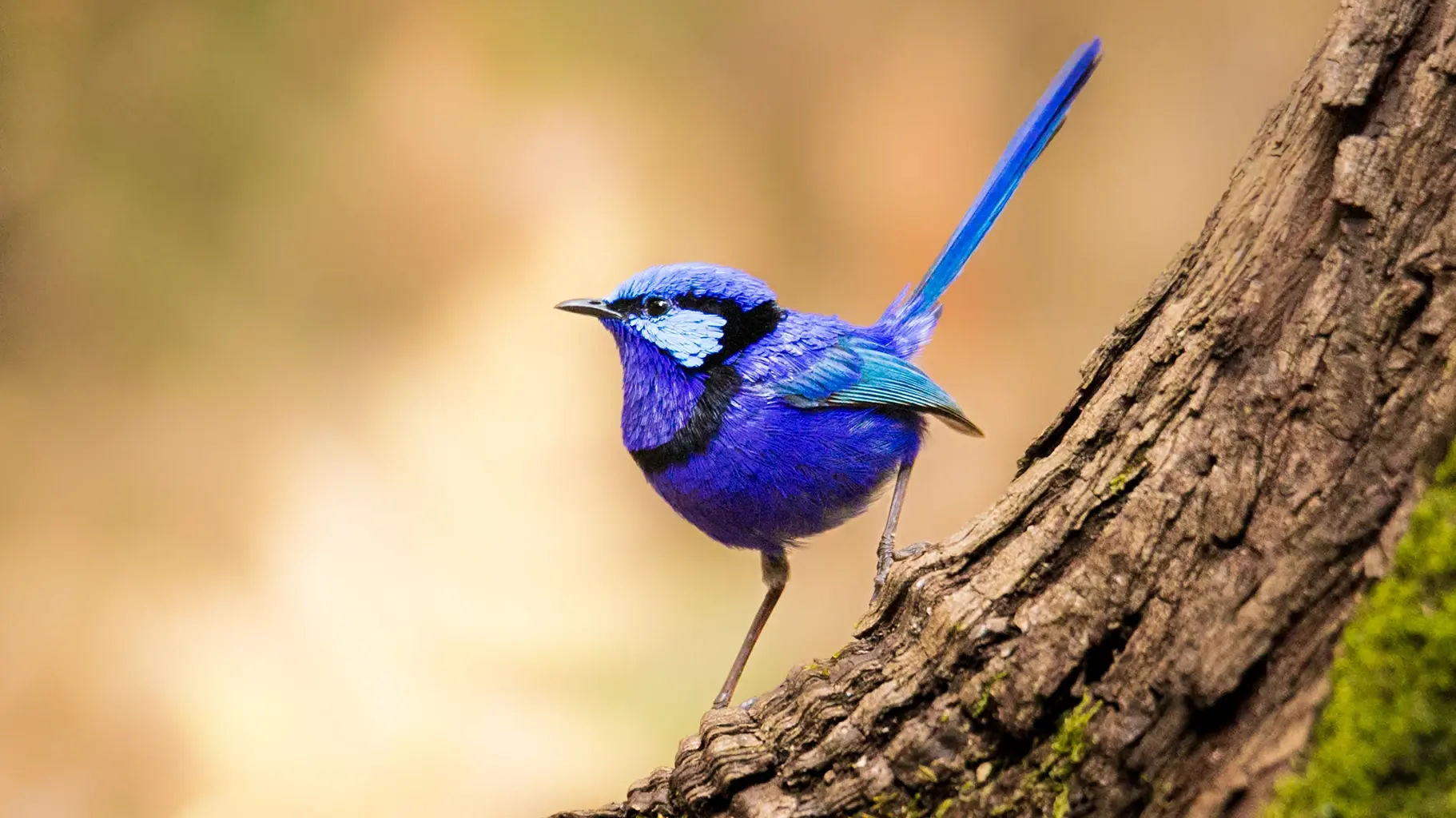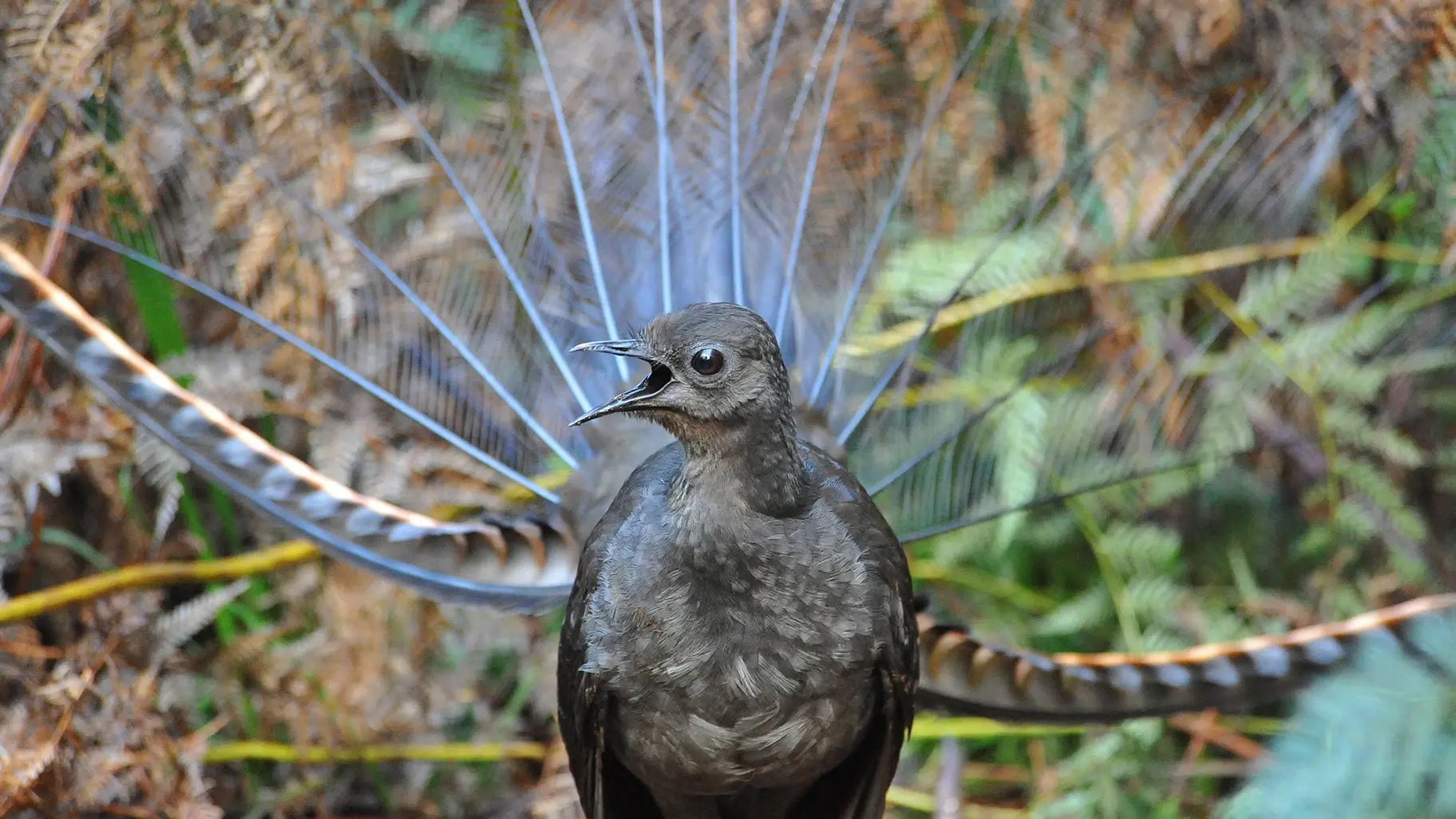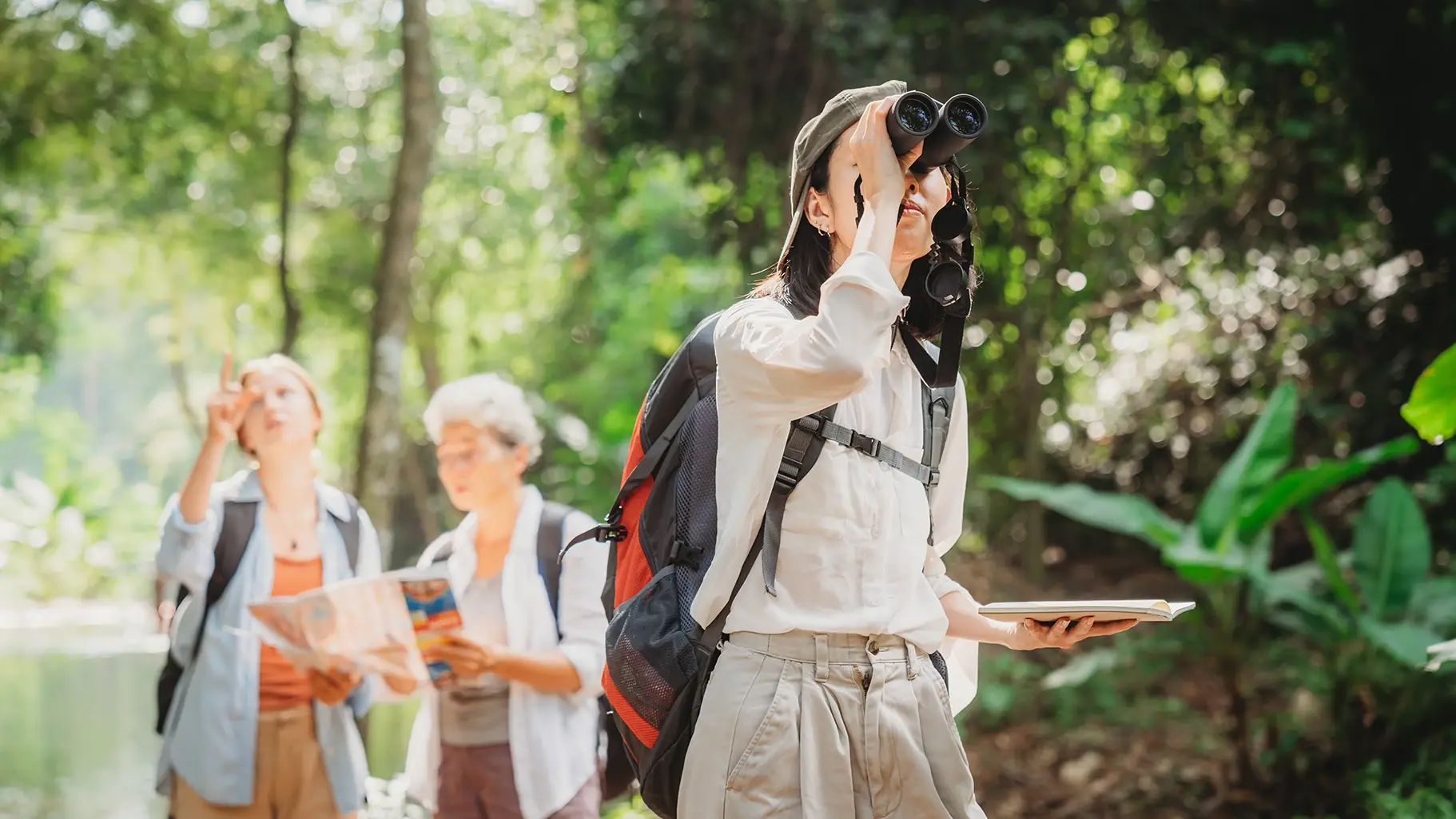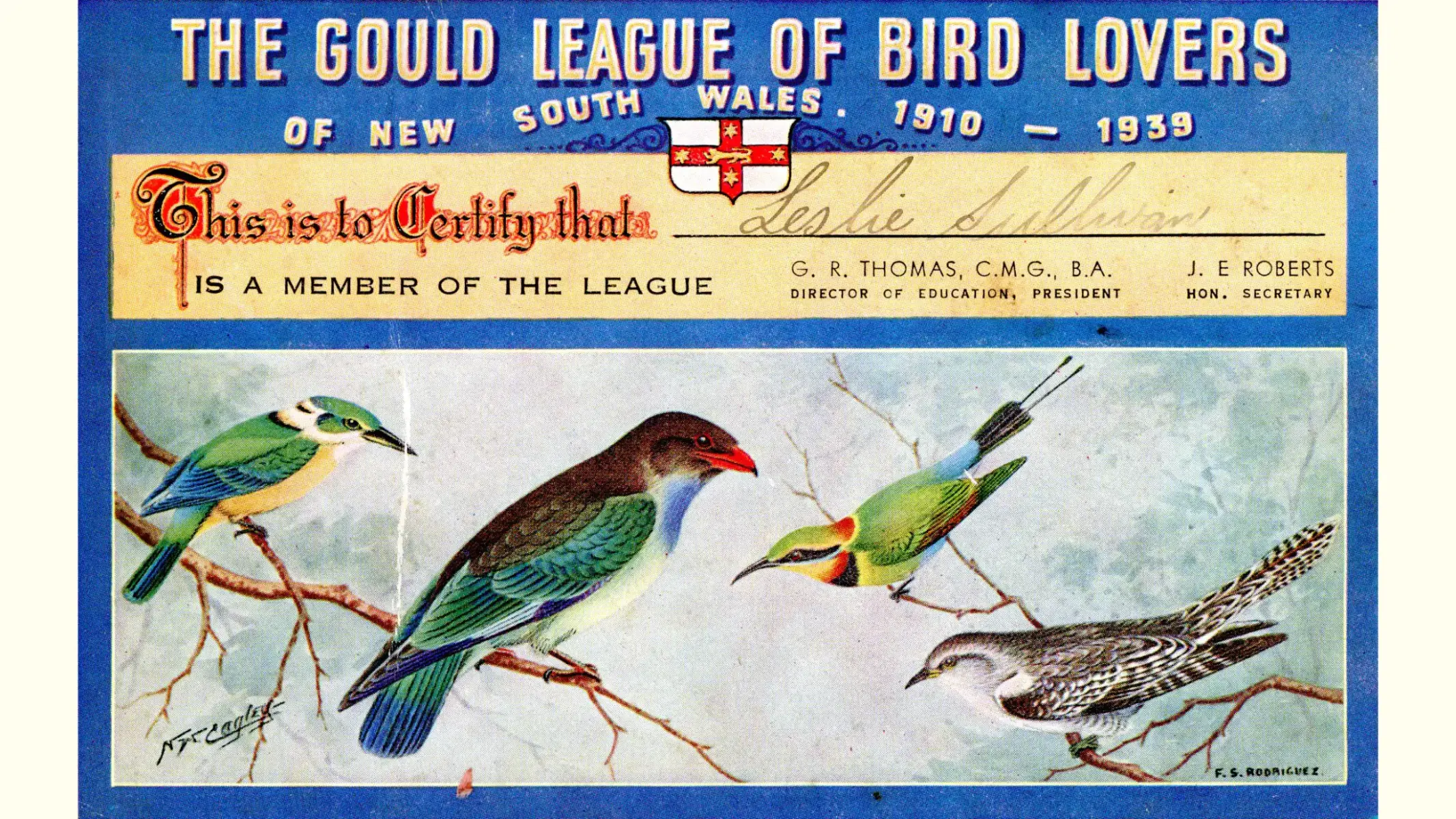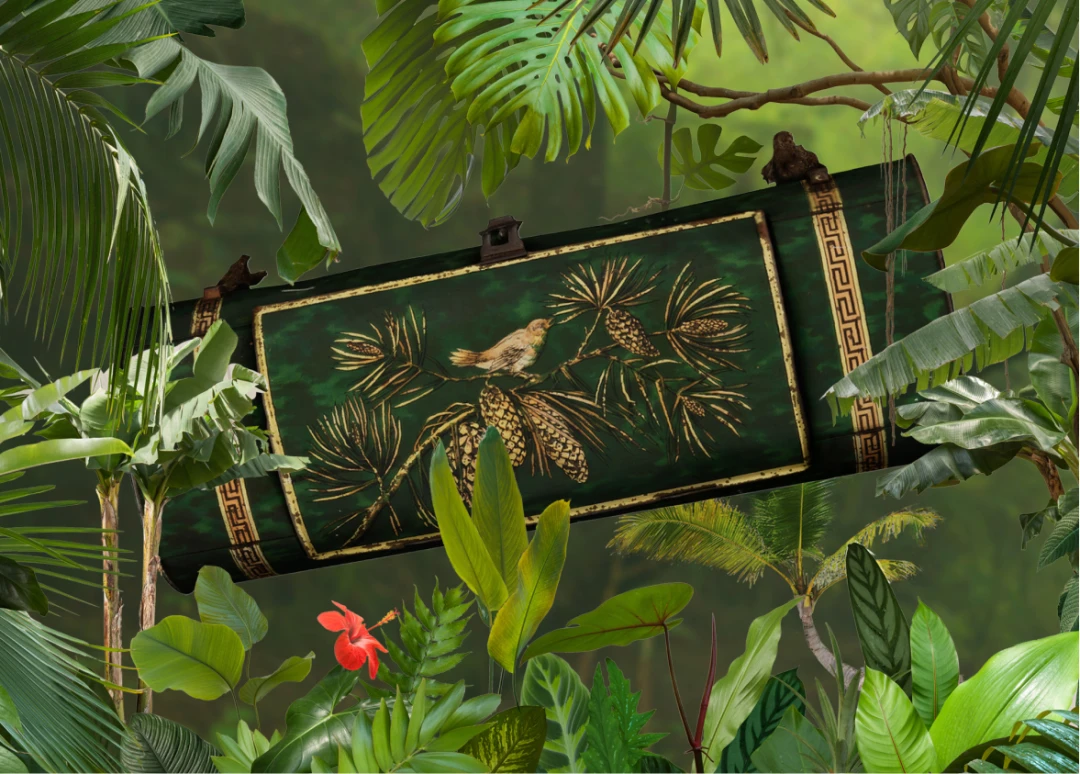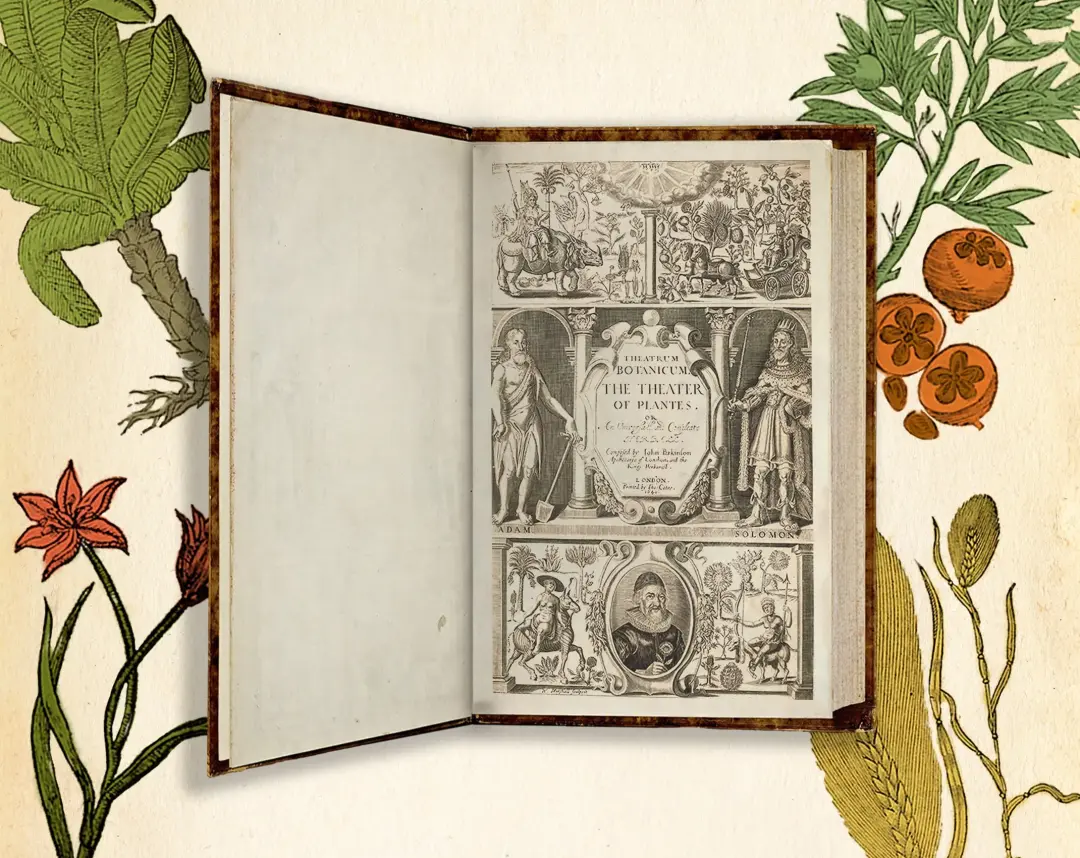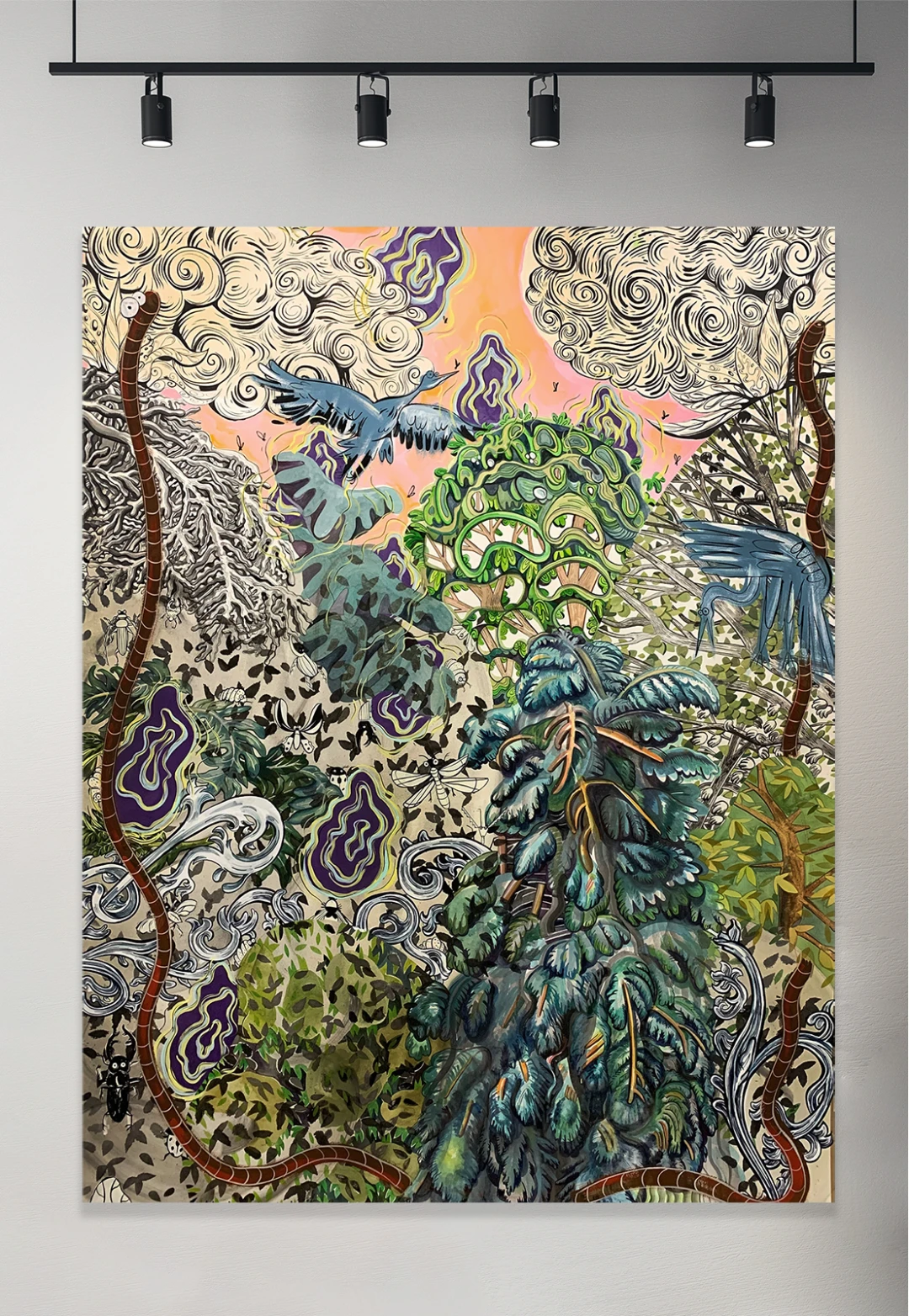Die Gould-Liga der Vogelliebhaber
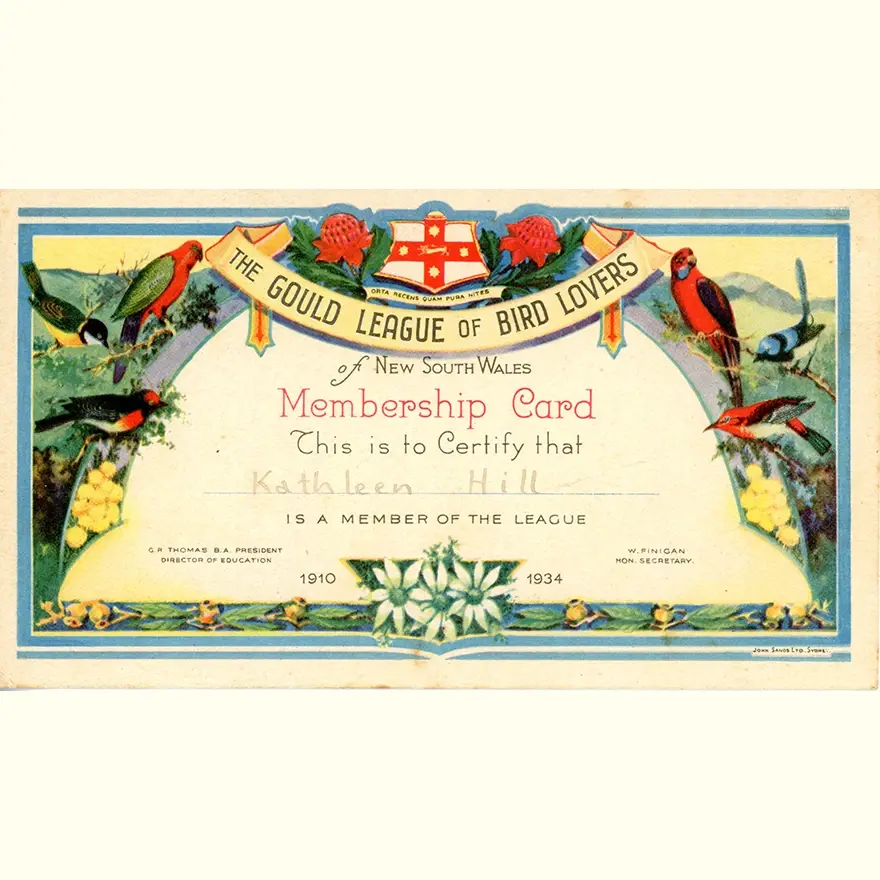
Die Gould-Liga war eine der ersten Naturschutzgruppen in Australien, die sich für den Vogelschutz durch Bürgerinitiativen einsetzte.

Die Liga brachte den Menschen viel Wissenswertes über Vögel bei und zeigte ihnen, wie man diese wichtigen Tiere schützen kann. Die Mitglieder erhielten Zertifikate wie deines !

Die Gould-Liga war eine der ersten Naturschutzgruppen in Australien, die sich für den Vogelschutz durch Bürgerinitiativen einsetzte.
Gould Liga Zertifikate
Werde aktiv und schütze die Tiere
Heute tragen viele Gruppen wie Birdlife und WWF zum Schutz der Vögel und der Natur bei. Die Gould-Ligen waren Pioniere darin, Kindern beizubringen, wie man sich um die Natur kümmert. 1967 änderte die Liga ihren Namen in das kürzere „The Gould League“. Diese Änderung spiegelte ihr neues Ziel und Versprechen wider, alle Lebewesen zu schützen - Vögel, Tiere und Pflanzen! Was motiviert dich, Vögel und andere Tiere zu schützen?

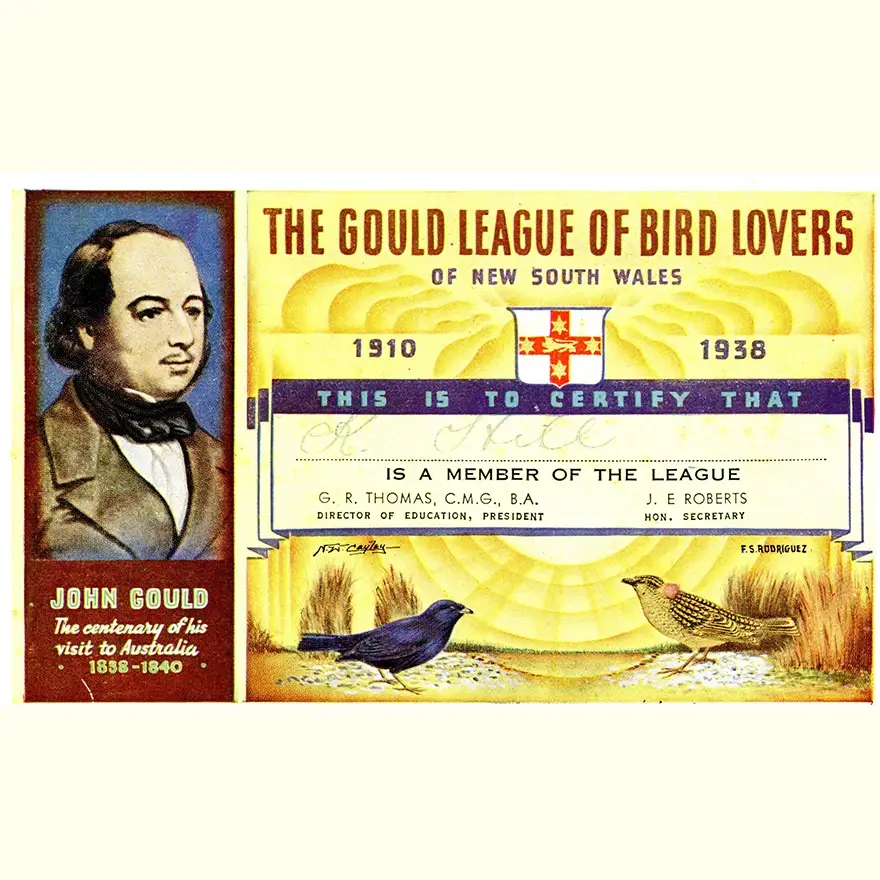
Die Gould-Liga wurde nach den englischen Naturforschern John und Elizabeth Gould benannt. In den 1800er Jahren veröffentlichte das Paar wunderschön illustrierte und gut recherchierte Bücher über Vögel. Viele Wissenschaftler nutzten ihre Bücher, um etwas über Vögel auf der ganzen Welt zu lernen.
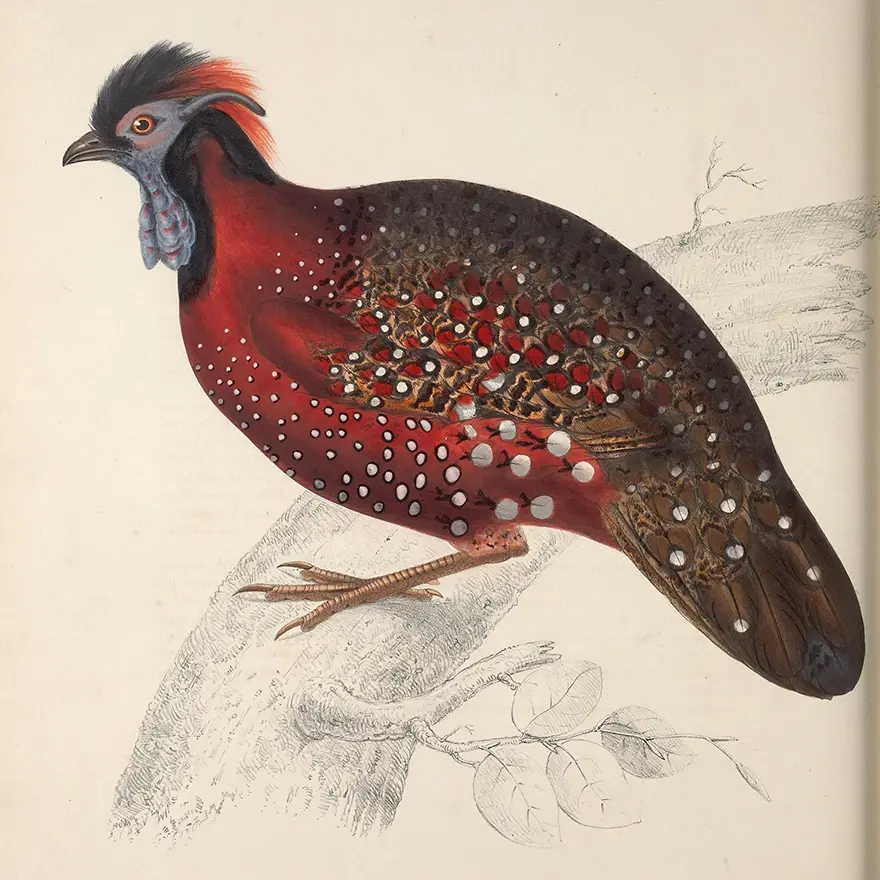
Aufgrund seiner wunderschönen Vogelzeichnungen erinnern sich auch heute noch viele Menschen an John Gould. Doch die meisten Zeichnungen stammten eigentlich von seiner Frau Elizabeth! John war zwar kein Künstler, aber er war massgeblich an der Gestaltung der Zeichnungen beteiligt, wie z. B. der oben abgebildeten Zeichnung des Purpurhornfasans.
Naturschutz geht jeden etwas an!
Der Slogan von 1965 der Gould League of Bird Lovers
Vögel, Vögel, überall!
Vögel sind einzigartig! Wie auch wir Menschen sind Vögel Wirbeltiere. Das heisst, dass sie eine Wirbelsäule und ein Skelett haben. Vögel sind auch Warmblüter. Alle Vögel legen Eier, haben Flügel und Federn, und die meisten können fliegen. Eine weitere Besonderheit von Vögeln ist, dass sie sehr weit verbreitet sind. Vögel gibt es auf allen Kontinenten und in allen Arten von Ökosystemen.
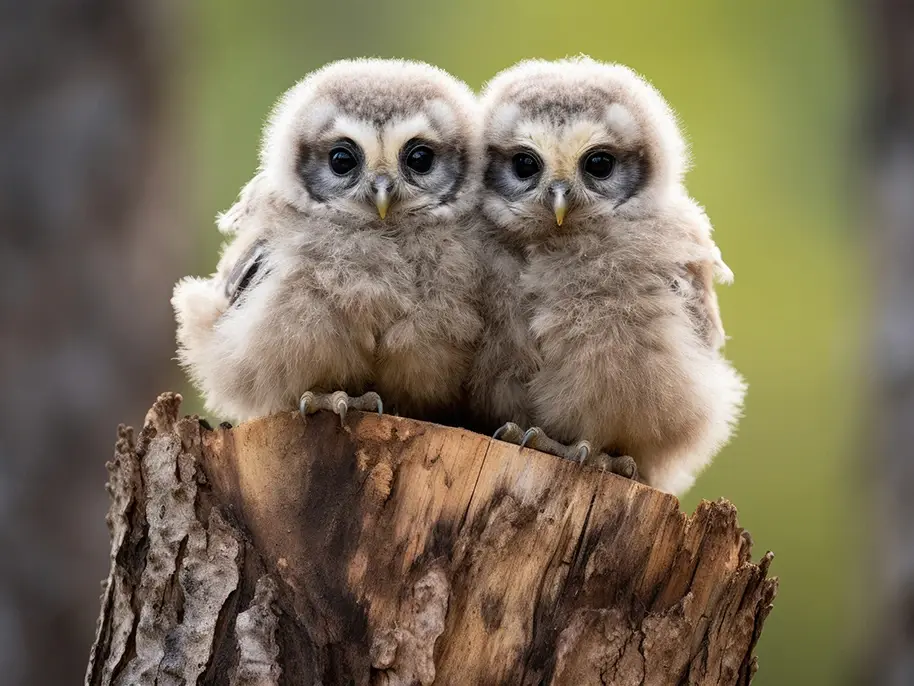
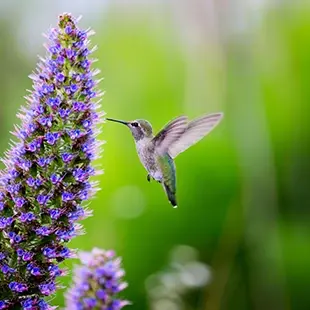
Bestäuber und Beschützer
Wusstest du, dass nicht nur Bienen und Insekten die Pflanzen bestäuben? Vögel sind auch wichtige Bestäuber! Vögel wie Kolibris und Honigfresser verbreiten Pollen, wenn sie Nektar von Blumen trinken. Viele Vögel verbreiten auch Samen mit ihrem Kot. Wissenschaftler haben herausgefunden, dass Vogelkot dabei hilft, Ökosysteme wie Korallenriffe gesund zu erhalten.

Aufräumtruppen!
Die Vögel tragen dazu bei, das Gleichgewicht der Ökosysteme zu erhalten und die Populationen unter Kontrolle zu halten. Viele Insekten ernähren sich beispielsweise von Pflanzen. Ohne Vögel, die deren Bestand begrenzen, könnten diese Insekten ganze Ökosysteme auffressen und zerstören! Ausserdem beseitigen Vögel wie Geier Kadaver schnell. Das verhindert die Ausbreitung von Krankheiten.
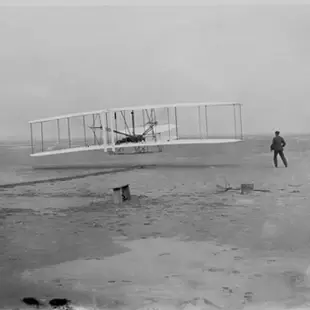
Von der Natur inspiriert
Die unglaublichen Fähigkeiten der Vögel, ihr Flugverhalten und ihre Federn haben viele Wissenschaftler und Erfindungen inspiriert. Darunter ist auch das erste Flugzeug. Die Gebrüder Wright entwarfen das erste Motorflugzeug. Die Idee für die Flugzeugflügel kam ihnen, als sie die Art und Weise studierten, wie Vögel im Flug ihre Flügel bewegen und positionieren. Hast du dich jemals von Vögeln oder der Natur inspirieren lassen?
Was erzählen uns die Vögel über die Gesundheit unseres Planeten?
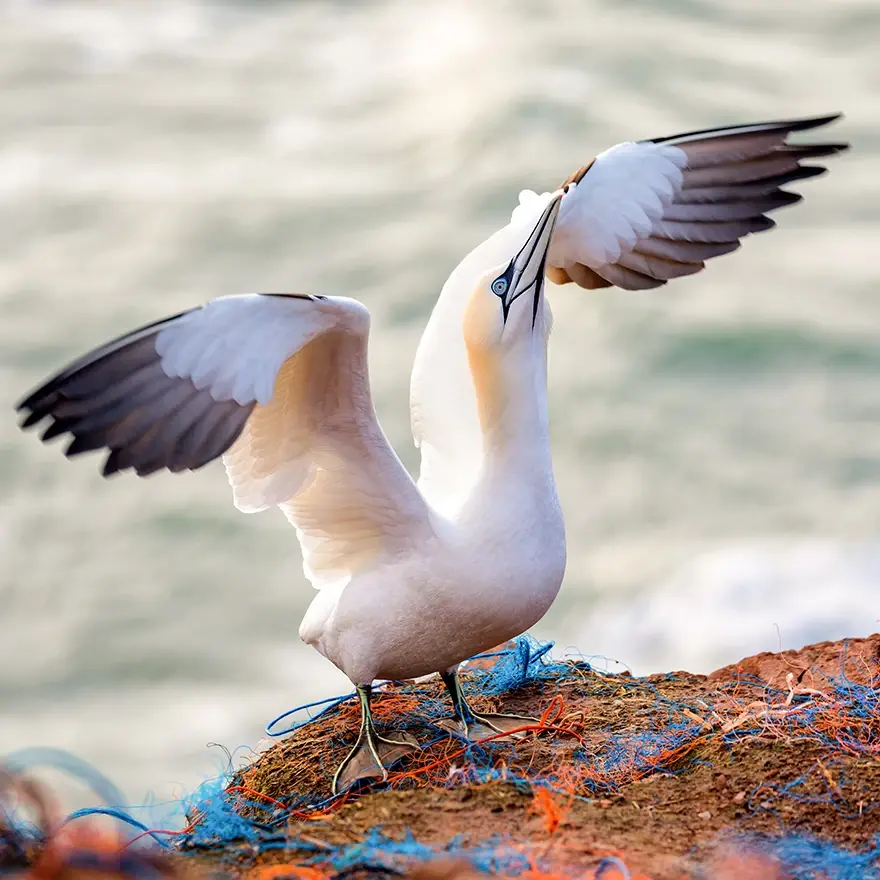
Wusstest du, dass Vögel uns helfen können, den Zustand der Erde zu verstehen? Weil sie fliegen, können Vögel oft schneller auf Veränderungen in ihrem Ökosystem reagieren als andere Tiere. Wenn sich zum Beispiel das Klima ändert, ändern die Vögel ihr Zugverhalten.

Anhand von Veränderungen im Verhalten der Vögel können Forschende erkennen, wann und warum sich ein Ökosystem verändert. Das kann helfen, den Zustand des Planeten besser zu verstehen. Dazu werden Vogeldaten benötigt. Ein Grossteil dieser Daten wird von Bürgerwissenschaftlerinnen und Bürgerwissenschaftlern beigetragen.
Bürgerwissenschaftlerinnen und Bürgerwissenschaftler auf der ganzen Welt helfen uns, Vögel und die Natur besser zu verstehen und zu schützen!
Helfe auch du der Wissenschaft
Bürgerwissenschaftlerinnen und Bürgerwissenschaftler sind ganz normale Menschen, die beim Sammeln von Daten helfen. Wenn es um die Welt der Vögel geht, können wir alle Daten darüber sammeln, welche Vogelarten wir sehen, wann und wo wir sie sehen und wie viele es sind. Wenn du die von dir gesammelten Daten weitergibst, kannst du den Forschenden helfen, wertvolle Erkenntnisse zu gewinnen und herauszufinden, wie man Vögel am besten schützen kann!

Was kannst du tun?
Heutzutage spielen Bürgerwissenschaftler/innen auf der ganzen Welt eine wichtige Rolle in der Naturschutzforschung und -arbeit. Es gibt viele Möglichkeiten, sich selbst an diesen Projekten zu beteiligen:
Nimm an einer Vogelzählung teil. Bei einer Vogelzählung identifizieren und zählen Bürgerwissenschaftler/innen die Vögel, die sie über einen kurzen Zeitraum sehen, und leiten dann ihre gesammelten Daten weiter. Vogelzählungen helfen Forschenden, Vögel besser zu verstehen und zu schützen!
Teile deine Beobachtungen mit einer App wie eBird. eBird hilft bei der Identifizierung von Vögeln und bei der Aufzeichnung und Übermittlung von Bildern, Videos und Audiodateien von Vögeln an Forschende. Jede Beobachtung hilft ihnen dabei, Entscheidungen zu treffen, wie die Natur am besten geschützt werden kann.
Beteilige dich an einem Bürgerforschungsprojekt in deiner Gegend. Bei Organisationen wie Birdlife, dem World Wildlife Fund oder einer lokalen Naturschutzorganisation in deiner Nähe kannst du dich ausführlich über solche Projekte informieren.
Möchtest Du mehr erfahren?
Bibliografie
Bürgerwissenschaft
BirdLife International. (2022, March 11). Anyone can be a citizen scientist! BirdLife International. https://www.birdlife.org/news/2022/03/11/anyone-can-be-a-citizen-scientist/
BirdLife International. (2022). State of the World’s Birds 2022: Insights and solutions for the biodiversity crisis. https://www.birdlife.org/papers-reports/state-of-the-worlds-birds-2022/.
Fraisl, D., Campbell, J., See, L. et al. (2020) Mapping citizen science contributions to the UN sustainable development goals. Sustain Sci 15, 1735–1751. https://doi.org/10.1007/s11625-020-00833-7
Sorenson, Graham. (2018, Nov. 7). Connecting regional Citizen Science projects with eBird. eBird Canada. https://ebird.org/canada/news/connecting-regional-citizen-science-projects-with-ebird
The Cornell Lab of Ornithology. (n.d.). Citizen Science for Educators. Cornell Lab of Ornithology, Cornell University. https://www.birds.cornell.edu/k12/citizen-science-for-educators
The Cornell Lab of Ornithology. (n.d.). Citizen Science. Cornell Lab of Ornithology, Cornell University. https://www.birds.cornell.edu/citizenscience
The Cornell Lab of Ornithology. (n.d.). Citizen Science: Be Part of Something Bigger. Cornell Lab of Ornithology, Cornell University. https://www.birds.cornell.edu/home/citizen-science-be-part-of-something-bigger/
The Cornell Lab of Ornithology, Bird Academy. (n.d.). Inspiring Investigations through Citizen Science. Cornell Lab of Ornithology, Cornell University. https://www.birds.cornell.edu/home/citizen-science-be-part-of-something-bigger/
The Cornell Lab of Ornithology. (n.d.). eBird. Cornell Lab of Ornithology, Cornell University. https://ebird.org/home
Vogeldaten und -wissenschaft
BirdLife International. (2022). State of the World’s Birds 2022: Insights and solutions for the biodiversity crisis. https://www.birdlife.org/papers-reports/state-of-the-worlds-birds-2022/.
Callaghan, C. T., Nakagawa, S., & Cornwell, W. K. (2021). Global abundance estimates for 9,700 bird species. Proceedings of the National Academy of Sciences, 118(21). https://www.pnas.org/doi/full/10.1073/pnas.2023170118.
Main, Douglas. (2021, May 17). How many birds are there in the world? New research estimates that there are between 50 billion and 430 billion birds on Earth. National Geographic. https://www.nationalgeographic.com/animals/article/how-many-birds-are-there-in-the-world-science-estimates.
Südkasuar
eBird. (n.d.). Southern Cassowary. Casuarius casuarius. The Cornell Lab of Ornithology. eBird. https://ebird.org/species/soucas1
Eschner, Kat. (2017, Sep. 22). Five Fascinating Facts About the Amazing Cassowary. Smithsonian Magazine (online edition). https://www.smithsonianmag.com/smart-news/five-facts-cassowary-180964963/
Healy, Timothy P. (2022, July 15). Southern Cassowary. (Casuarius casuarius). Birds of the World, The Cornell Lab of Ornithology. https://doi.org/10.2173/bow.soucas1.02
Smithsonian’s National Zoo and Conservation Biology Institute. (n.d.) Southern Cassowary. https://nationalzoo.si.edu/animals/southern-cassowary
World Wildlife Magazine. (2021). Meet the cassowary, a bird with claws rivaling Freddy Krueger’s. https://www.worldwildlife.org/magazine/issues/fall-2021/articles/meet-the-cassowary-a-bird-with-claws-rivaling-freddy-krueger-s
Endemische Arten
American Museum of Natural History. (n.d.). Endemic. Ology Card 339. American Museum of Natural History. https://www.amnh.org/explore/ology/ology-cards/339-endemic
Morrone, J.J. (2008). Endemism. Encyclopedia of Ecology. Vol. 3, p. 81-86. https://doi.org/10.1016/B978-0-444-63768-0.00786-1
Vogelmerkmale
Gill, F. , Storer, . Robert W. and Rand, . Austin L. (2023, November 14). bird. Encyclopedia Britannica. https://www.britannica.com/animal/bird-animal
National Geographic. (2012). Birds Pictures and Facts. Animal Encyclopedia, National Geographic. https://www.nationalgeographic.com/animals/birds
U.S. Department of Agriculture. (n.d.). Bird Pollination. U.S. Forest Service, United States Department of Agriculture. https://www.fs.usda.gov/wildflowers/pollinators/animals/birds.shtml
Warum sind Vögel wichtig?
Law, Jessica. (2019, Jan. 4). Why we need birds (far more than they need us). BirdLife International. https://www.birdlife.org/news/2019/01/04/why-we-need-birds-far-more-than-they-need-us/
Leffer, Lauren. (2021, Dec. 17). 6 Unexpected Ways Birds Are Important for the Environment (and People). Audobon Magazine. https://www.audubon.org/news/6-unexpected-ways-birds-are-important-environment-and-people
Missouri Department of Conservation. (n.d.). Why Should We Care About Birds? Missouri Department of Conservation. https://mdc.mo.gov/wildlife/birds-7/why-should-we-care-about-birds#:~:text=Birds%20Keep%20Our%20Ecosystems%20Running%20Smoothly&text=Birds%20eat%20400%E2%80%93500%20tons,as%20hummingbirds%20help%20pollinate%20plants.
Wright Brüder
Library of Congress. (n.d.). The Inventive Wright Brothers. Library of Congress, Classroom Materials. https://www.loc.gov/classroom-materials/inventive-wright-brothers/#:~:text=Lilienthal%27s%20study%20of%20the%20flight,and%20position%20of%20their%20wings.
Malsbury, Erin. (2020, Dec. 17). How We Lifted Flight from Bird Evolution. Smithsonian Voices, from the Smithsonian Museums. Smithsonian Magazine. https://www.smithsonianmag.com/blogs/national-museum-of-natural-history/2020/12/17/how-we-lifted-flight-bird-evolution/
National Air and Space Museum. (n.d.). 1903 Wright Flyer. The Estate of Orville Wright. National Air and Space Museum. https://airandspace.si.edu/collection-objects/1903-wright-flyer/nasm_A19610048000
Prachtfeigenzaunkönig
eBird. (n.d.). Splendid Fairywren. Malurus splendens. The Cornell Lab of Ornithology. eBird. https://ebird.org/species/splfai1
John and Elizabeth Gould
Australian Museum. (n.d.). John and Elizabeth Gould. Australian Museum. https://australian.museum/publications/birds-storybox/john-elizabeth-gould/.
Australian Museum. (n.d.). John Gould: books and illustrations. Australian Museum. https://australian.museum/learn/collections/museum-archives-library/john-gould/.
Australian Museum. (n.d.). Elizabeth Gould (1804-1841). Australian Museum. https://australian.museum/learn/collections/museum-archives-library/john-gould/elizabeth-gould-1804-1841/.
Castellucci, Adria. (2022, July 12). Elizabeth Gould in Australia. Australian Museum. https://australian.museum/learn/collections/museum-archives-library/john-gould/elizabeth-gould-1804-1841/elizabeth-in-australia/.
Castellucci, Adria. (2022, July 12). Elizabeth Gould: working wife, Victorian mother. Australian Museum. https://australian.museum/learn/collections/museum-archives-library/john-gould/elizabeth-gould-1804-1841/working-wife-and-mother/.
Castellucci, Adria. (2022, July 12). John Gould’s documents of extinction. Australian Museum. https://australian.museum/learn/collections/museum-archives-library/john-gould/goulds-documents-of-extinction/.
Castellucci, Adria. (2022, July 12). The early art of Elizabeth Gould. Australian Museum. https://australian.museum/learn/collections/museum-archives-library/john-gould/elizabeth-gould-1804-1841/elizabeth-gould-early-art/.
Chisholm, A.H. (1979, 2006). Cayley, Neville William (1886-1950). Australian Dictionary of Biography, National Centre of Biography, Australian National University, https://adb.anu.edu.au/biography/cayley-neville-william-5540/text9439.
Chisholm, A.H. (1966, 2006). Gould, John (1804-1881). Australian Dictionary of Biography, National Centre of Biography, Australian National University, https://adb.anu.edu.au/biography/gould-john-2113/text2667.
Chisholm, A.H. (1979, 2006). Gould, Elizabeth (1804–1841). Australian Dictionary of Biography, National Centre of Biography, Australian National University, https://adb.anu.edu.au/biography/gould-elizabeth-2112/text2665.
Research Library. (2021, April 16). John Gould and his contribution to science. Australian Museum. https://australian.museum/learn/collections/museum-archives-library/john-gould/gould-and-his-contribution-to-science/.
Research Library. Stephens, Matthew. (2021, January 14). John Gould in Australia. Australian Museum. https://australian.museum/learn/collections/museum-archives-library/john-gould/gould-in-the-field/.
Research Library. Stephens, Matthew. (2021, February 12). John Gould the artist. Australian Museum. https://australian.museum/learn/collections/museum-archives-library/john-gould/gould-the-artist/.
Twyman, Anette. (2021, July 6). Birds of a Feather. National Portrait Gallery. https://www.portrait.gov.au/magazines/65/birds-of-a-feather.
Die Gould-Ligen
BIRD DAY. (1909, June 5). Geelong Advertiser (Vic. : 1859 - 1929), p. 3. http://nla.gov.au/nla.news-article150844091.
BIRD DAY. (1909, June 5). Geelong Advertiser (Vic. : 1859 - 1929), p. 3. http://nla.gov.au/nla.news-article150844091.
BIRD DAY. (1911, October 21). Leader (Melbourne, Vic. : 1862 - 1918, 1935), p. 28. http://nla.gov.au/nla.news-article198144411.
BIRD DAY. (1911, October 25). The Maitland Daily Mercury (NSW : 1894 - 1939), p. 2. http://nla.gov.au/nla.news-article121471225.
Cayley, Neville William. (1954). What bird is that? A guide to the birds of Australia. Angus & Robertson. https://www.biodiversitylibrary.org/item/251259#page/9/mode/1up.
Egg Collecting. (1936, January 4). Nepean Times (Penrith, NSW : 1882 - 1962), p. 5. http://nla.gov.au/nla.news-article101062709.
Kass, Dorothy. (2017). Gould League of Bird Lovers. Dictionary of Educational History in Australia and New Zealand (DEHANZ). https://dehanz.net.au/entries/gould-league-of-bird-lovers/.
NSW Schoolhouse Museum of Public Education. (n.d.). Gould League of Bird Lovers of New South Wales membership. NSW Schoolhouse Museum of Public Education. https://www.schoolhousemuseum.org.au/collection/collection-stories/gould-league-membership-cards/.
Victorian Collections. (2018, January 9). Victorians & Native Birds: An evolving relationship. Victorian Collections, https://victoriancollections.net.au/stories/victorians-native-birds-an-evolving-relationship.
Copyright und Lizenzen
Vogelbilder im interaktiven Abschnitt
Ausgeschnittenes Bild einer Pfuhlschnepfe. John Gould, Elizabeth Gould, Edward Lear, The Birds of Europe, IV, 1837. Plate 306. Tafel 54. Originalbild aus der Biodiversity Heritage Library. Zur Verfügung gestellt von Smithsonian Libraries. | www.biodiversitylibrary.org. Gemeingut. (https://www.biodiversitylibrary.org/page/42174043)
Ausgeschnittenes Bild eines Wanderfalken. John Gould, Elizabeth Gould, Edward Lear, The Birds of Europe, V, 1837. Plate 419. Originalbild aus der Biodiversity Heritage Library. Zur Verfügung gestellt von Smithsonian Libraries. | www.biodiversitylibrary.org. Public Domain. (https://www.biodiversitylibrary.org/page/42358579)
Ausgeschnittenes Bild einer Rauchschwalbe. John Gould, Elizabeth Gould, Edward Lear, The Birds of Europe, II, 1837. Plate 54. Originalbild aus der Biodiversity Heritage Library. Zur Verfügung gestellt von Smithsonian Libraries. | www.biodiversitylibrary.org. Public Domain. (https://www.biodiversitylibrary.org/page/42173401)
Ausgeschnittenes Bild eines Wanderfalken. John Gould, Elizabeth Gould, Edward Lear, The Birds of Europe, I, 1837. Plate 21. Originalbild aus der Biodiversity Heritage Library. Zur Verfügung gestellt von Smithsonian Libraries. | www.biodiversitylibrary.org. Public Domain. (https://www.biodiversitylibrary.org/page/42174323)
Ausgeschnittenes Bild eines Eisvogels. John Gould, Elizabeth Gould, Edward Lear, The Birds of Europe, II, 1837. Plate 61. Originalbild aus der from Biodiversity Heritage Library. Zur Verfügung gestellt von Smithsonian Libraries. | www.biodiversitylibrary.org. Public Domain. (https://www.biodiversitylibrary.org/page/42173375)
Ausgeschnittenes Bild eines Kiebitzes. John Gould, Elizabeth Gould, Edward Lear, The Birds of Europe, IV, 1837. Plate 291. Originalbild aus der Biodiversity Heritage Library. Zur Verfügung gestellt von Smithsonian Libraries. | www.biodiversitylibrary.org. Public Domain. (https://www.biodiversitylibrary.org/page/42173983)
Ausgeschnittenes Bild einer Löffelente. John Gould, Elizabeth Gould, Edward Lear, The Birds of Europe, V, 1837. Plate 360. Originalbild aus der Biodiversity Heritage Library. Zur Verfügung gestellt von Smithsonian Libraries. | www.biodiversitylibrary.org. Public Domain. (https://www.biodiversitylibrary.org/page/42358344)
Ausgeschnittenes Bild eines Silberreihers. John Gould, Elizabeth Gould, Edward Lear, The Birds of Europe, IV, 1837. Plate 276. Originalbild aus der Biodiversity Heritage Library. Zur Verfügung gestellt von Smithsonian Libraries. | www.biodiversitylibrary.org. Public Domain. (https://www.biodiversitylibrary.org/page/42173923)
Ausgeschnittenes Bild einer Schleiereule. John Gould, Elizabeth Gould, Edward Lear, The Birds of Europe, I, 1837. Plate 36. Originalbild aus der Biodiversity Heritage Library. Zur Verfügung gestellt von Smithsonian Libraries. | www.biodiversitylibrary.org. Public Domain. (https://www.biodiversitylibrary.org/page/42174383)
Ausgeschnittenes Bild eines Superb Lyrebirds. John Gould, Elizabeth Gould, Henry Constantine Richter, The Birds of Australia, III, 1848. Plate 14. Originalbild aus der Biodiversity Heritage Library. Zur Verfügung gestellt vonSmithsonian Libraries. | www.biodiversitylibrary.org. Public Domain. (https://www.biodiversitylibrary.org/page/48285735)
Vogelgesang
Küstenseeschwalbe - Sterna paradisaea, Lars Edenius, CC BY-NC-SA 4.0
Rauchschwalbe - Hirundo rustica, Lars Edenius, CC BY-NC-SA 4.0
Pfuhlschnepfe - Limosa lapponica, Lars Edenius CC BY-NC-SA 4.0
Eisvogel - Alcedo atthis, Rekordfeld Konzept, CC BY-NC-SA 4.0
Silberreiher - Ardea alba, Marco Dragonetti, CC BY-NC-SA 4.0
Kiebitz - Vanellus vanellus, Oliver SWIFT, CC BY-NC-SA 4.0
Löffelente - Spatula clypeata, Simon Elliott, CC BY-NC-SA 4.0
Wanderfalke - Falco peregrinus, Lars Edenius, CC BY-NC-SA 4.0
Prächtiger Leierschwanz - Menura novaehollandiae, Vicki Powys, CC BY-NC-SA 4.0
XC771408 - Westliche Schleiereule - Tyto alba, Dominique Guillerme, CC BY-NC-SA 4.0
Bilder im Quiz
Northern Lapwing Display Behaviour von creativenature.nl via Adobe Stock.
A superb lyrebird, Menura novaehollandiae, Victoria, Australia von Rixie via Adobe Stock.
Magnificent Barn Owl perched on a stump in the forest (Tyto alba) von Monikasurzin via Adobe Stock.
Great white egret landing von Jérôme Bouche via Adobe Stock.

